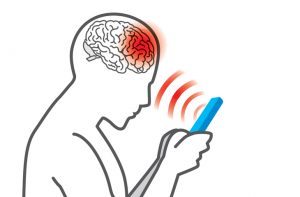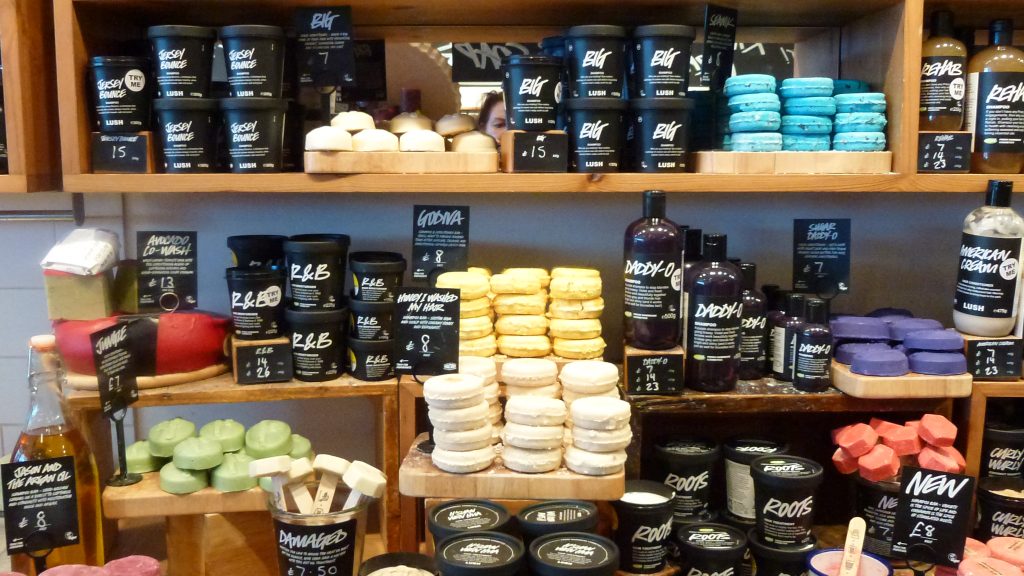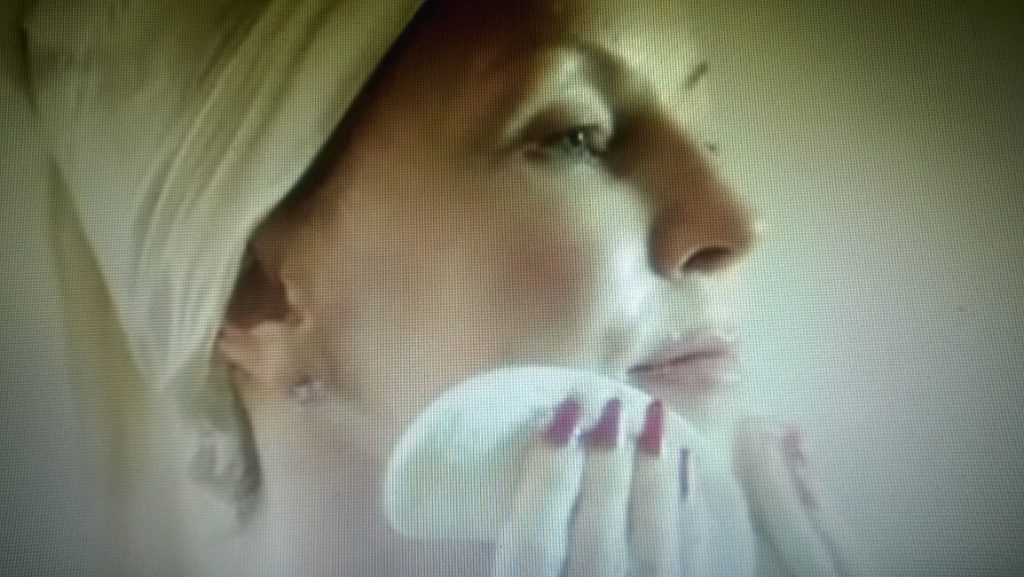Electrosmog is the man-made electromagnetic pollution of the natural world. Expert Guy Hudson tells us how reducing electrosmog in our homes and workplaces can not only keep us healthier, but how in his own experience, also keep us looking and feeling younger.
By Iwona Lilley

Guy Hudson BSc, is a physicist and an expert advisor on how to manage electromagnetic pollution to reduce electrosmog.
GHe was born in 1954 in England and currently lives in Hurstpierpoint, West Sussex.
Guy graduated from Sussex University in 1977 with honours in physics and economics.
He then set out on a technical career in car design and telecommunications before founding the Dowsing Research Group, where he worked for 19 years.
More recently, Guy became a founder in 2008 of Beneficial Environments Ltd., where he currently works as an electromagnetic surveyor and developer.
He is a scientist who is a member of the Institute of Physics and who published work including: “Electrosmog Doctor”, which appeared as a regular column in “What Doctor’s Don’t tell You”, a health magazine.
Although Guy does not live in Weybridge he can provide his expertise to the people who live in the area.
Guy, for those who don’t know, can you please briefly explain what electrosmog is and what is the electrosensitivity problem?
The technology that we use everywhere now provides a very broad spectrum of different electromagnetic frequencies as a by-product.
So, mobile phones, Wi-Fi, cordless phones, pi supply, house wiring, power supply, all electronic, all this kind of things produce pollution, which our body can feel and our biology responds to, that what electrosmog is.
And what is electrosensitivity?
There are two definitions of electrosensitivity. One is that our biology and all living things interact strongly with electrosmog. There are different effects and electrosmog can cause many kinds of diseases.
We are all sensitive to this pollution and our bodily system, as well as insects, birds, bacteria, and everything around us is affected by this. 
The second definition is called electrohypersensitivity, which is when this interaction causes allergy like responses within humans.
Please tell us how can You help people who suffer with an excess electricity around us?
We get allergies, so let’s say If you have an allergy to bread, you will stop eating bread. The same is with electrosensitivity. You need to stop exposing yourself to electrosmog.
First,you need to identify the source of electrosmog and then reduce it. We cannot see it or hear it, but you can detect it using simple meters and with experience you can identify the source and control it.
There are two approaches to protecting yourself. One is by switching off your
Wi-Fi, electricity, all those kind of things that change the environment.
The other way is called an electromagnetic hygiene. This is where you actually change the way you use technology. It is your habits, your behaviour. You take steps to minimize the exposure to electromagnetic by-products.
You can do as I do. I reduce the voltage between me and my computer, so when I have my hands on the keyboard there is no field coming off the computer onto my hands. I also use a special head set for my phone that does not put any disturbance into my ear.
As an electrosensitive person myself, I wear shielding clothing, so I have a T-shirt and boxer shorts that reflect microwaves. That allows me carry on my work in London. It stops me being badly affected while travelling on the train. It allows me to live a full life without unnecessary disturbance.
To purchase all protective clothing and all electrosmog detecting meters and protective equipment go to: https://beneficialenvironments.co.uk;
To enjoy the benefits of lower pollution, for advise and consultation and for all electrosmog surveying and developing services you can contact Guy on +44(0)1273251956
Do we need to think about electromagnetic pollution when building or refurbishing our houses?
Absolutely.
I understand that in so called ‘eco homes’ electromagnetic pollution (EMR and EMF) is not always considered. Shouldn’t we always aim to obtain healthier electromagnetic balance when we build a house?
Certainly. We should stop as individuals building up CO2. Farmers, for instance, need to change their attitudes to preserve the soil.
It is up to us to protect our environment. Some so called ’eco homes’ are like the worst polluted electromagnetically environment.
Proper eco homes are ‘Eco 2.0’, because they are not only ecologically designed to save the planet through reducing energy consumption, but also create a healthy environment for the humans and animals who live in them and they have minimum magnetic pollution.
There are massive number of people who suffer with long term condition that can be improved by reducing electricity.
It makes an enormous difference to how you feel and how you look. It is also very noticeable how much younger people look when they take care of their electromagnetic environment. When they reduce it, people really look a lot younger.
Reducing electrosmog is fundamentally beneficial not only to our health but also to how we look when getting older.
The ‘eco homes’ are usually the worst. They are all unhealthy, but it is not difficult or too expensive to make them much better.
They need the right expertise.
We as consumers of modern technology are very confused, as there are two different scientific opinions. One says that we can use it (non-ionizing radiation) and it will not harm us. That is an opinion of people like Dr David Robert Grimes and Prof Dorothy Bishops, for instance. The other one is like yours and that of Dr Erica’s Mallery- Blythe, who is associated with Radiation Research Trust, and who runs PHRIE. Your opinions warn us against too excessive exposure.
There is a lot of evidence that electromagnetic radiation causes diseases, and it is not only ionizing radiation, but also the lower power radiation like microwaves and even mains frequencies cause these problems.
To find out about the plentiful evidence about the harmful effects of electromagnetic radiation, please go to charity called ES-UK and their listing of all scientific papers on the subject written over last hundred years. These papers are often peer-reviewed and show and confirm the very strong evidence of harmful electromagnetic effects on health.
It is not all bad. There are some wonderful machines based on EMR. If you do this right, they can be extremely beneficial, but the thought here is given to the radiation given off by the modern technology. A lot of it, unfortunately is harmful.
Some results of experiments claim that electrosensitive people complain about electromagnetic exposure even if the source is a sham. That leads to being diagnosed with a psychological or psychosomatic problem and not a physical disturbance one.
It is about understanding how electrosensitivity works. It is the design of experiments that is a problem, not that electrosensitivity is only psychological. Any disease that causes so much pain, discomforts, lack of sleep is going to have psychological component too, but these people do not imagine this problem.
I know that not many people are aware that electricity is first of all a natural force in nature. Our life is based on workings of bio-electricity in our system. It is a natural force within our organism that plays the role of a medium conducting messages from our brains to all parts of our body and mind. The life of all beings depends on this natural force that can be described as bio-electricity.
When it comes to man-made electricity, it is a dead force, would you agree with that?
Electricity is an important part of life, but it is not a life force. To think that electricity is part of life is wrong. Life uses electricity to perform so many different functions. It is a new source of pollution, certainly.
We need to distinguish between bio-electricity, natural electricity that is a life force, and man-made electricity, popularly known as electricity, that is not a life force.
My point is, that all this technology is incredibly useful, and we are never going to be without mobile phones ever again.
As an engineer, I spent years in the car industry designing, testing and manufacturing cars. Every component in a car, whether it is a petrol cap or a steering wheel, perhaps a door handle, or whatever it is, is designed with safety in mind.
If you look at electronics and power distribution, almost no consideration is given to human safety from the electromagnetic pollution point of view. This is particularly true with recent advances, and that is what needs to happen: these industries need to wake up.
Volvo, for instance, made their product very safe and they were pioneers at that. It takes a brave mobile company to have similar pioneering attitudes, but people who are safety conscious would pay more for those particular safe mobile phones.
That is a trend that needs to be started as soon as possible.
Electricity is a natural force in nature and now we have lots and lots of new devices appearing powered by man-made electricity. It is becoming crowded with all this. In health there is always a balance that needs to be observed. There is an overwhelming amount of these electrical devices nowadays and therefore, as you say, of electrosmog and pollution.
Yes.
There is still a huge amount of research to be done. While the scientific consensus is that people know about these bio-effects, there is not enough funding, and there is not enough research going on to determine what is harmful and what isn’t.
It needs more research and safety standards. In fact, I have been working on a committee on International Guidelines on Non-Ionizing Radiation. These are based on standards set by doctors in Germany, Austria and Switzerland called the European EMF Guidelines. We are developing standards for safe environments. These standards will ensure low levels of EMR, which will improve life for electrosensitive people and for all.

It is in the public interest to get the science right.
What about an electric car? Given the problems with electrosmog, when we will end up with thousands and thousands of man-made electric cars around us, isn’t it naive of us to think that electric cars with their electromagnetic pollution footprint are solution to carbon dioxide pollution caused by cars?
Ha! Ha! Ha! It is a good question.
It is a very complicated subject. Certainly, when it comes to electromagnetic pollution, whether it is an electric car or an ordinary car like diesel or petrol, the biggest pollution already comes from the tyres. If you bother to measure inside the car on motorway speeds, you will find that levels exceed safety by 30 to 40 times.
We are already in the situation when a car creates huge electromagnetic pollution.
Some electric cars seem to be designed with electrosmog in mind. This is an important issue and engineers need to consider this when designing new cars.
Finally, please tell us, if you could turn fantasy into the real world, what would be Your dream home and Your dream holiday?
Well I am going to build one as I will retire soon.
I want it to be low in electrosmog, so I will have an ‘Eco 2.0’ house. That is my dream house and I am going to work with developers and architects to make sure I’ll get one in the next few years.
My dream holiday? Well, you have to be really careful now. I used to love walking along hills in England and also in the Alps, but so often there is so much technical equipment at the top of the hills now.
I can be very badly affected by the radiation from all the masts up there, so what would have been my dream holiday has changed really.
I think swimming in the sea in the warm climate. Being in the sea you are surrounded by electricity conductive water, which is all earthed and therefore for electrosensitive people it is a very, very comfortable environment. So, a beach.
There is a thing called EMF White Zone. I am comeing back to the EMF standards that were launched on 13 September 2018 at the London Conference about children with cancer.
EMF White Zone is a specially protected zone with low electrosmog, so I want an EMF White Zone beach and some nice clean water to swim in.
That is my ideal holiday.
Guy thank you so much for talking to us.























